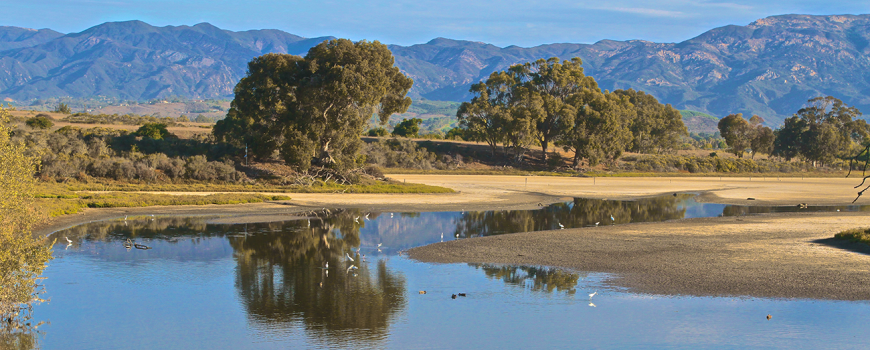A team of experts has provided three cities, the County of Santa Barbara, and UC Santa Barbara (UCSB) with a report using the best-available science to inform ecosystem-based climate adaptation planning at the local level.
The natural and built environments along the coast of California will change considerably over the next 100 years as a result of climate change. To address the gap in scientific information regarding climate change impacts to natural systems, the report includes detailed information about vulnerabilities to natural coastal communities and habitats in southern Santa Barbara County.
“Local governments can play a major role in maintaining valuable ecosystem services and reducing impacts to coastal ecosystems,” said project leader Monique Myers, an Extension Specialist with California Sea Grant. “The majority of land-use planning decisions are made at the local level.”
The Santa Barbara Area Coastal Ecosystem Vulnerability Assessment (SBA CEVA) report addresses five topics: climate change, watershed runoff, coastal hazards and shoreline change, estuaries, and beaches. Scientists worked in close collaboration with the Cities of Santa Barbara, Carpinteria, and Goleta, the County of Santa Barbara, and UCSB throughout the duration of the research.
Four major take home messages are identified:
- All climate models examined were consistent in predicting increasing temperatures across the region throughout the 21st century.
- The amount of annual watershed runoff will increase for all Santa Barbara watersheds.
- Many beaches will narrow considerably, and as many as two-thirds will be completely lost over the next century.
- Estuarine wetlands and sandy beaches of Santa Barbara County are extremely vulnerable to the effects of sea level rise.
Researchers anticipate this report will be used by local land use planners and decision-makers to identify potential vulnerabilities of ecosystems to projected climate change impacts, and inform updates to coastal land use plans and sea level rise adaptation plans. Ultimately, authors hope to facilitate movement toward ecosystem-based climate change adaptation, which involves using biodiversity and ecosystem services as part of the strategy.
“Our coastal ecosystems include thousands of species. They are an integral part of the beauty and character of the Santa Barbara area. They also provide very practical benefits such as shoreline protection and water purification. SBA CEVA report gives decision-makers the best possible information so they can include conservation of coastal ecosystems in long-range planning,” Myers said.
Led by California Sea Grant, SBA CEVA was developed from the work of three of the state’s leading ecological and climatological research programs: UCSB’s Santa Barbara Coastal Long-Term Ecological Research (LTER) Program, the Scripps Institution of Oceanography at UC San Diego (SIO) and their activities within the California and Nevada Applications Program Regional Integrated Science and Assessment (CNAP RISA), the California 4th Climate Assessment and the Southwest Climate Science Center Program, and USGS Coastal Storm Modeling System (CoSMoS) and accompanying coastal change monitoring program. Additionally, watershed models were developed by researchers at Northeastern University in collaboration with the Santa Barbara Coastal LTER.
Major funding for SBA CEVA was provided by the NOAA Climate Program Office Coastal and Ocean Climate Applications (COCA) and the Sea Grant Community Climate Adaptation Initiative (CCAI).
View the report: Santa Barbara Area Coastal Ecosystem Vulnerability Assessment (SBA CEVA)

